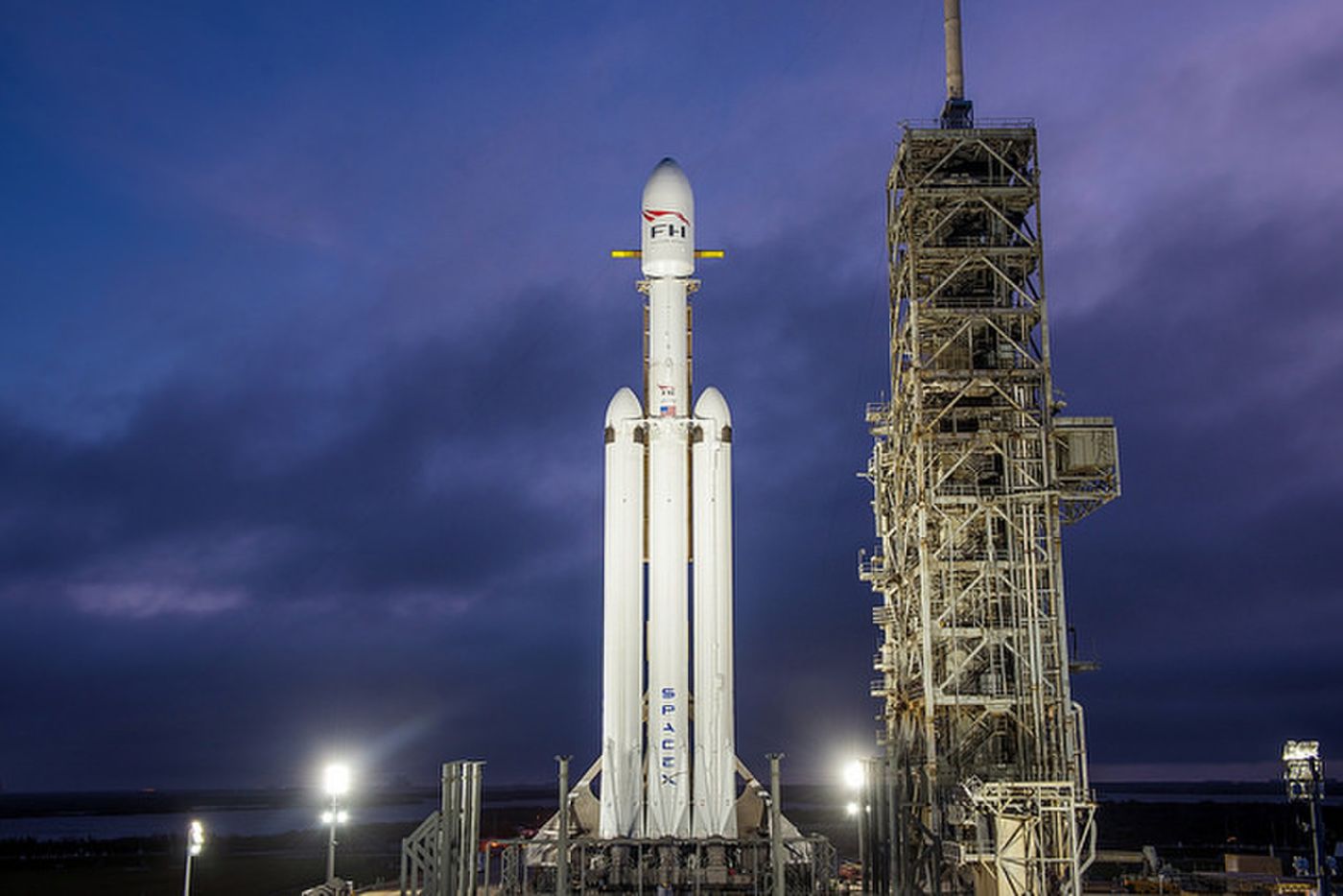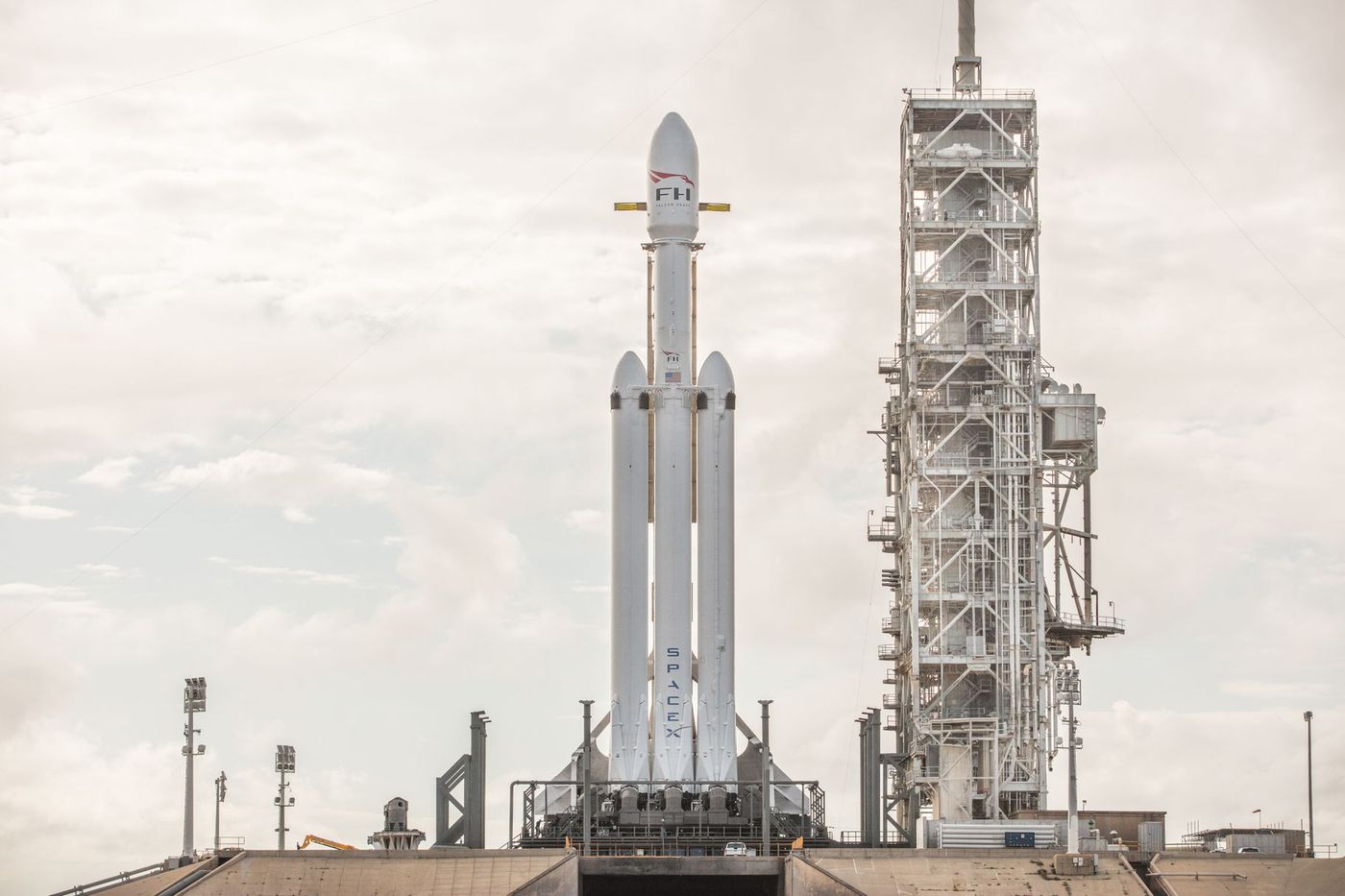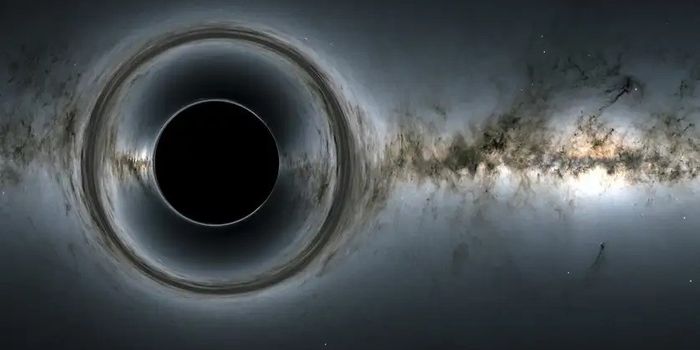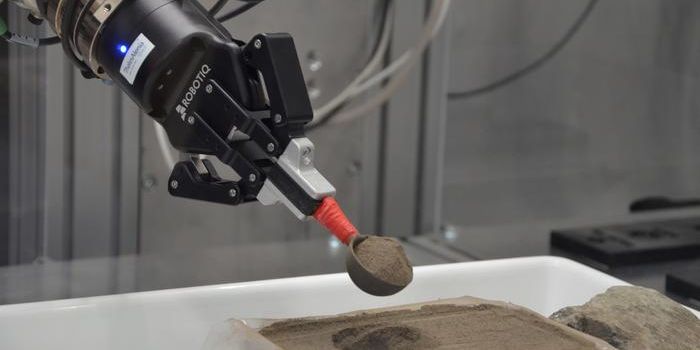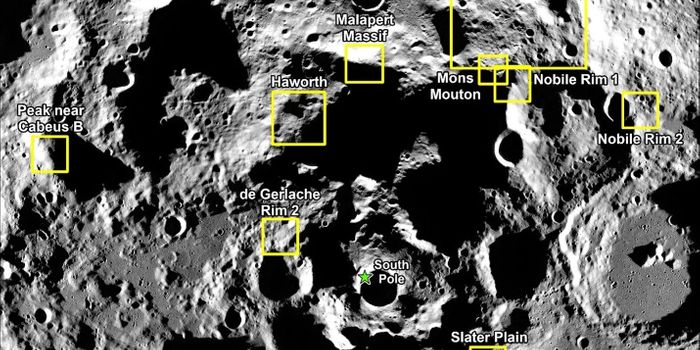SpaceX's Falcon Heavy Rocket Stands Tall at Launchpad 39A
SpaceX has teased its heavy-lifting Falcon Heavy rocket for months, and now it officially stands tall at NASA’s historic Launchpad 39A – the very same one used by the space agency's Saturn V rockets to put astronauts on the Moon several decades ago.
Image Credit: SpaceX
Traditionally, SpaceX shares images of its accomplishments from time to time, so both day and night images showcasing this magnificent piece of engineering have made their way to the internet this week.
Image Credit: SpaceX
And if the images alone weren’t enough to do this massive rocket justice, then check out the following drone footage released by SpaceX:
Although the Falcon Heavy rocket merely looks like three Falcon 9 boosters strapped together, it’s so much more than that. Falcon Heavy sports 27 individual Merlin engines that generate enough thrust to lift up to 119,000 pounds of cargo into outer space.
Related: Here's what the Falcon Heavy launch might look like
Falcon Heavy’s maiden flight isn’t scheduled until the end of January, but it’s standing upright at NASA’s Launchpad 39A because SpaceX needs to perform preliminary launch tests before it’s ready to lift off. But will it? Elon Musk isn’t entirely sure yet.
There’s a 50/50 chance that Falcon Heavy could either work as expected or blow up before it gets into space. Regardless, the launch should be exciting, as the rocket will carry a Tesla Roadster inside of its cargo hold when its engines ignite later this month.
Assuming everything goes according to plan, each of the three Falcon Heavy booster rockets will return to Earth and land upright on separate landing pads. Afterward, recovery crews can collect them for refurbishment.
If Falcon Heavy lives up to the Falcon 9’s reputation, then perhaps it could become a mainstream method for sending heavier loads into space going forward.
